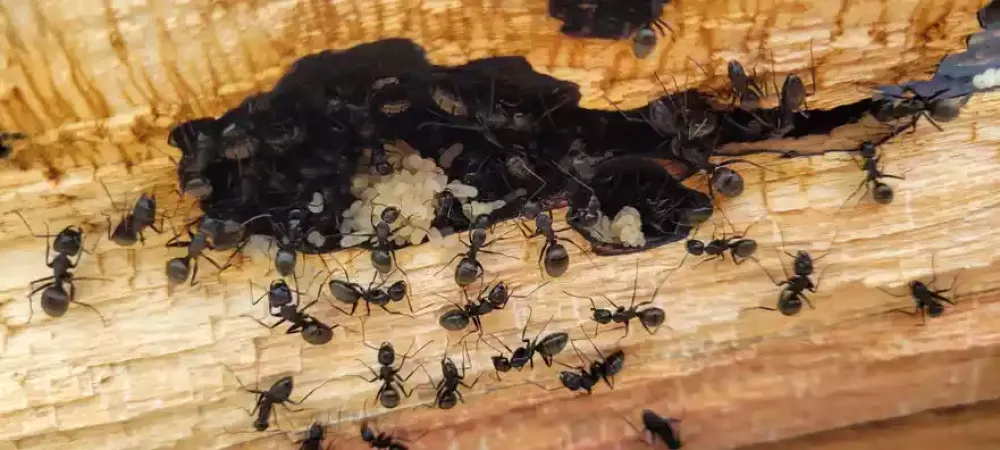The Difference Between Termites and Carpenter Ants

Termites and carpenter ants share a love of wood that can result in extensive damage to a structure. Both are adept at concealing their presence, so they sometimes have years to work undisturbed before they are detected. Furthermore, since termites and carpenter ants appear quite similar to the untrained eye, many people frequently mistake one for the other. However, there are some differences in behavior and appearance that can make it easier to determine whether the invading pests are termites or carpenter ants.
Differences in Behavior
Termites can digest cellulose, so they actually eat wood. Carpenter ants do not eat wood; they remove it to create a hollow area for a nest or gallery. Although both species may establish a gallery inside the walls of a structure, some termites prefer mud mounds for shelter; these mounds can be below or above the ground. Of the two pests, only termites build mud tubes on exterior walls for traveling between their food source and their nest.
The damaged wood will also appear different. Carpenter ants leave the hollowed-out wood extremely clean and smooth; termites leave damaged wood that is rugged and messier, and there may be dead insects or mud present.
Swarming occurs when the population of the nest reaches a certain size and begins to produce both male and female winged, reproductive offspring. Swarming is a method used for the establishment of new colonies. Carpenter ants as well as termites swarm, but the sizes of their swarms are typically quite different. A termite swarm may contain many thousands of insects, while the swarms of carpenter ants usually contain several hundred insects.
Differences in Appearance
Physically, there are numerous differences between termites and carpenter ants. However, it may be necessary to use a magnifying glass to see all of these differences.
Bodies: Termites have two distinct segments and a thick waist. Carpenter ants have three segments a narrow, thin waist.
Antennae: Termites have antennae that appear quite straight. Carpenter ants have antennae with a noticeable bend.
Wings: The wings have a number of differences. Although both species have four wings, all four of a termite’s wings are the same size; the hind wings of a carpenter ant are noticeably smaller than the front wings. A termite’s wings are shaped like a paddle, but the wings of a carpenter ant are pointed. In proportion to body size, the wings of a carpenter ant are not as long as a termite’s wings. Carpenter ants have wings that are a bit more translucent than those of termites, and the veins in a carpenter ant’s wings are much easier to see with the naked eyes. Termites have wings that are much more fragile than those of carpenter ants, so it is common to find broken wings wherever termites are active. However, after swarming, both species lose their wings, so other evidence is necessary to confirm whether the pests are termites or carpenter ants.
Color: The bodies of carpenter ants are dark brown. Termites have bodies that are a lighter shade of brown, but they may appear to be white during certain phases of the termite’s lifecycle.
Despite the differences between termites and carpenter ants, the only way to be certain of which pest has invaded your property is to enlist the services of a reputable professional. Whether you have a problem with termites, carpenter ants or another pest, you can contact Termagon for fast, reliable service.
